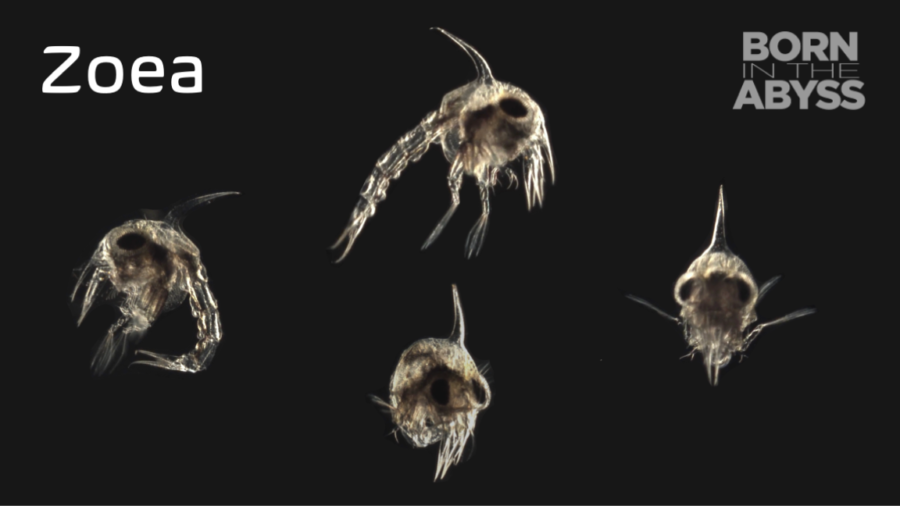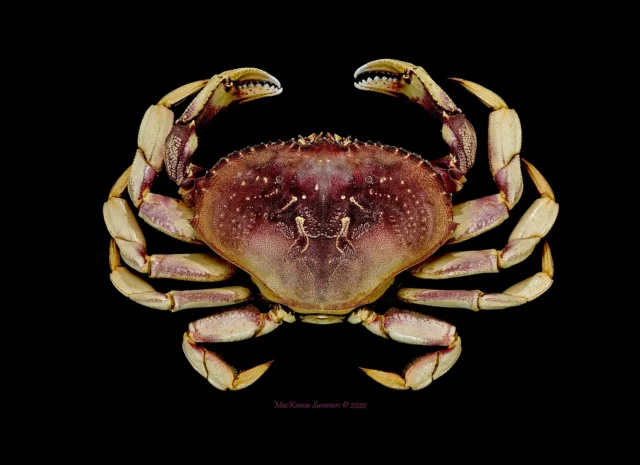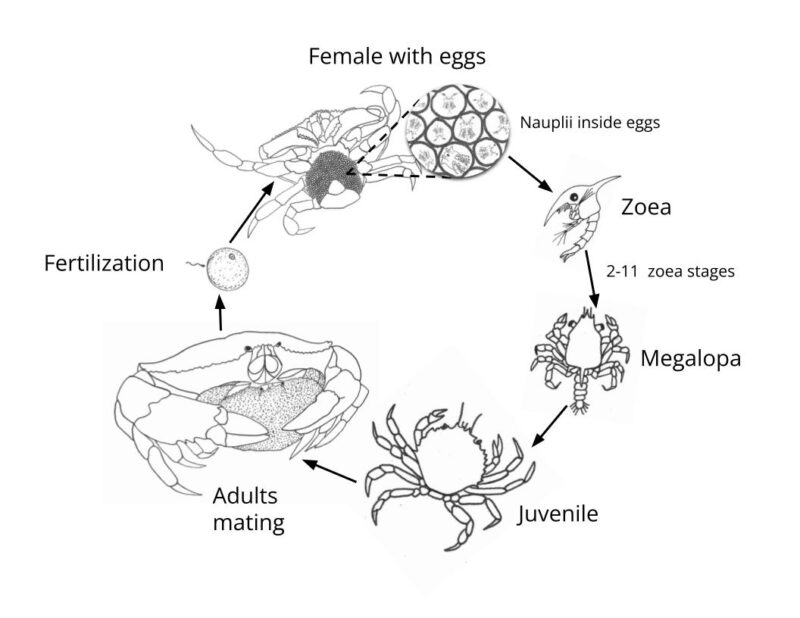
Zoea Larva
From the Greek word "zōē," which means "life"
Parents: Crabs and shrimps
Food: Microscopic algae called phytoplankton and other tiny animals called zooplankton
Size: About 800 microns long = 0.8 millimeters = 0.03 inches

Photo of an adult Dungeness Crab by McKenna Summers.
Larval Form and Function
Watch this compilation video to learn more about the movement, anatomy, and feeding of the zoea larva.
Life Cycle of a Crab

Drawn by Nadia Stoker
- The zoea larval form is one of multiple forms in a typical crab or shrimp lifecycle. Nauplius, zoea, and megalopa are all larval forms in the above lifecycle.
- Adult crabs and shrimp have separate males and females. During the mating season, male crabs will hold the female until she is ready to mate.
- The female holds the eggs with her abdomenal flap, where they develop until they hatch as zoeae larvae.
- Crabs and shrimp can live as larvae for about a year, eating algae (phytoplankton) and other animals (zooplankton) and molting their carapace many times until they grow large enough to transition into juveniles. Adults can live for anywhere from one to more than 10 years and are generally scavengers.
- Zoea and megalopa have compound eyes that can see images, while most larvae can only sense light and dark.
Larval Quest Activity
Developed by Nadia Stoker and Caitlin Plowman as outreach and education materials accompanying the Born in the Abyss film.
The Stephen Low Company
Oregon Institute of Marine Biology, University of Oregon
National Science Foundation

